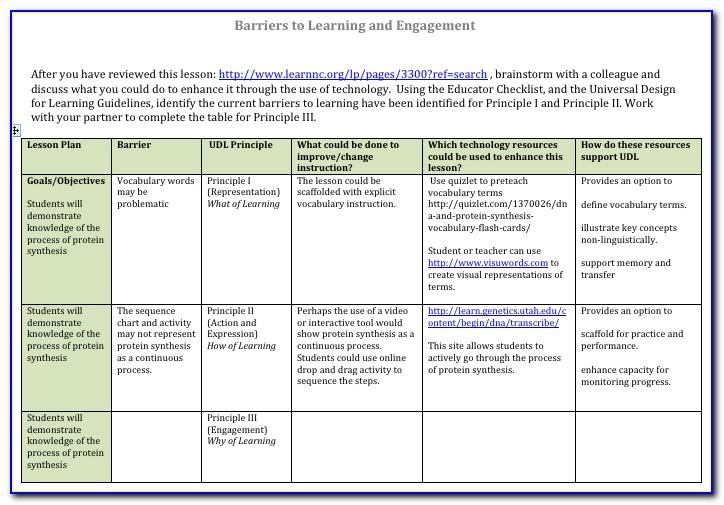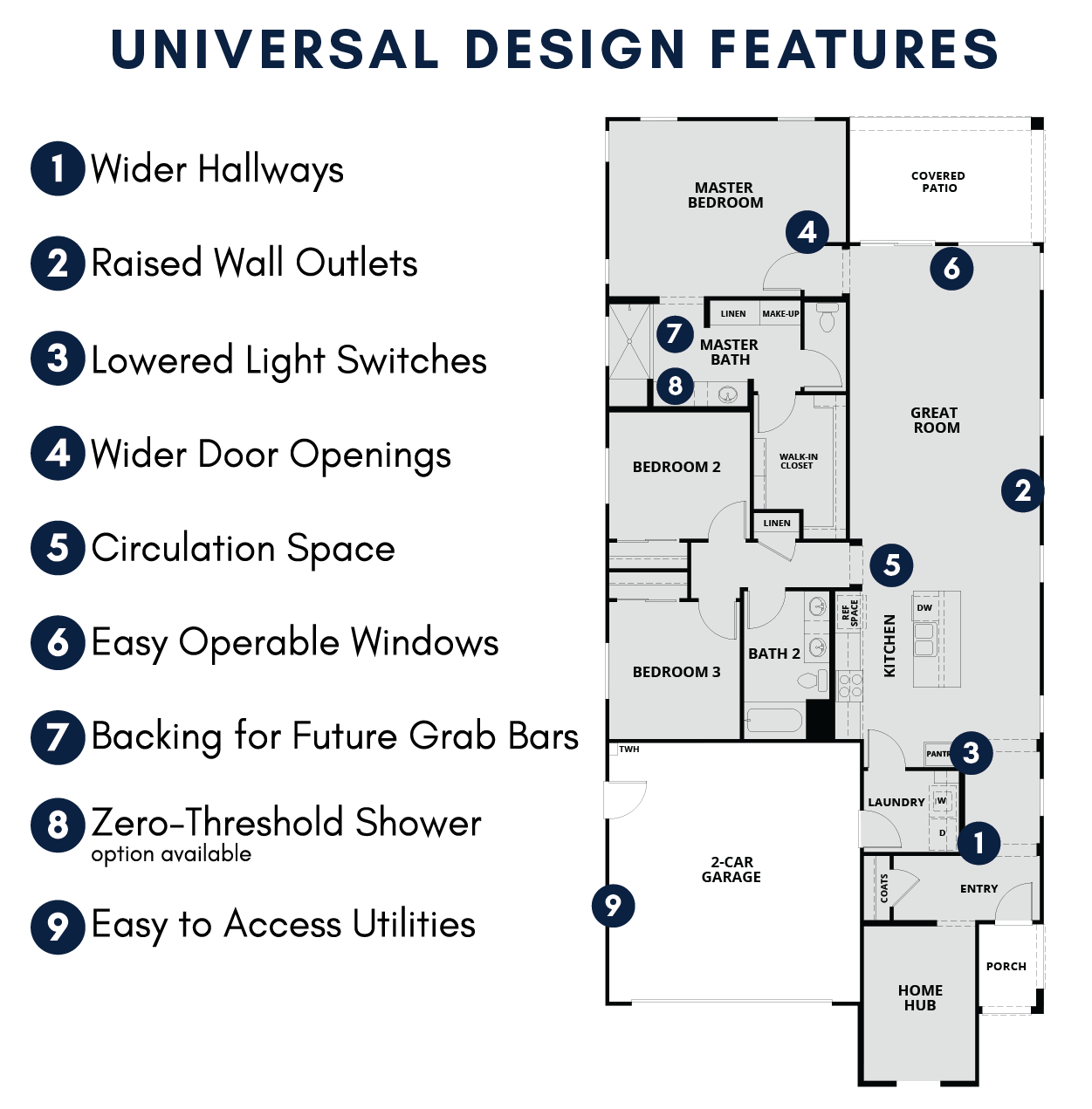Table Of Content

These changes make it easier for people with limitations, whether that's reduced physical movement while recovering from a surgery or using an assistive mobility device daily, while also increasing usability for children. Here, we'll cover key areas of universal design that work together to embrace multiple generations and abilities under one roof. Universal design (UD) is not a fad or trend but an enduring design approach grounded in the belief that the broad range of human ability is ordinary, not special. Supported by the Goals of UD, UD addresses barriers faced by people with disabilities, older adults, children, and other populations who the design process typically overlooks. Commercial buildings should include accessible restrooms with features such as grab bars, lowered sinks, and wide stalls to accommodate wheelchair users and those with other mobility impairments. By fostering inclusivity in public spaces, the universal design contributes to developing vibrant, diverse communities where everyone can enjoy the benefits of social interaction, recreation, and cultural enrichment.
What are the best examples of inclusive design principles?
Universal Design as a Framework for Diversity, Equity, and Inclusion Initiatives in Higher Education DO-IT - UW Homepage
Universal Design as a Framework for Diversity, Equity, and Inclusion Initiatives in Higher Education DO-IT.
Posted: Sun, 09 Jan 2022 07:09:21 GMT [source]
Technical equipment with UD features can also help employers create a welcoming workplace. For example, phones are increasingly designed with simpler interfaces, larger buttons, handsets, and shoulder braces. Cell phones often have voice recognition technology for those who have difficulty using standard buttons, or simply find it more convenient, especially while driving or typing. Manufacturers are now integrating UD principles into their newest products, making it easier for businesses to meet the diverse wants and needs of their employees and customers. Using these products can give employers a competitive advantage — by increasing efficiency and attracting top talent seeking to use state-of-the-art technology.
Universal Design Seeks to Address Core Accessibility Issues at Universities - Daily Utah Chronicle
Universal Design Seeks to Address Core Accessibility Issues at Universities.
Posted: Sun, 16 Apr 2023 07:00:00 GMT [source]
Do I need to be certified in special education to use UDL in my classroom?
The flexibility built into this approach simultaneously provides a better learning experience for all students and offers a way for students with disabilities to participate without special accommodations. This principle demonstrates the necessity for designs to offer suitable dimensions and spatial allowances, i.e. building restroom stalls that accommodate wheelchairs. In terms of a website or application, this might involve creating buttons and other interactive features that are adequately large and spaced apart, facilitating easy clicks or taps regardless of the user’s device or chosen means of input. This means the design should be adaptable and accommodate flexibility for the user. In a digital context, this involves designing interfaces that can be used in multiple ways, aligning with user preferences. This could include allowing the customization of text size, color contrast, or the ability to navigate via keyboard or mouse.
Principle 7 Guidelines
You can design superb interactive experiences by adding appropriate keyboard shortcuts. They will improve the navigation and make websites easier to use for all users. TED is a non-profit organization, which is dedicated to spreading ideas via short power talks. The talks are usually 18 minutes or less and are often uploaded as videos on their websites.
The 7 Principles of Universal Design: A Closer Look

Universal design principles advocate designing inclusive and accessible spaces and products for all people, regardless of physical or cognitive ability. The universal design philosophy considers the full range of human capabilities to ensure that no one is left out and helps create a more inclusive world. It’s often highlighted that many physical and digital designs labeled as ‘inclusive’ fall short. They fail to fully consider the diverse values and lifestyles of people with disabilities. This oversight and lack of incorporating universal design principles can lead to barriers that do not fully support the very users they aim to assist. Universal design is a powerful and transformative approach that seeks to create spaces and products that are accessible, usable, and enjoyable for everyone, regardless of age, ability, or background.
According to an MIT Touch Lab study in 2003, the average size of a human adult index finger is 1.6 to 2 cm. Converting that, we have approximately 60–76 pixels on a digital screen. So, the next time you design for mobile, make sure your touch target areas take the human physical factors into consideration. Keyboard shortcuts reduce the need to move from the keyboard to the mouse for simple tasks. Most browsers such as Chrome, Firefox, and Safari provide keyboard shortcuts to perform tasks such as copy (Ctrl + C) and paste (Ctrl + V).
Second, it focuses on finding one solution that will function equally for everyone, rather than fragmented approaches that divide users. The most important international work on accessibility is the Convention on the Rights of Persons with Disability (CRPD). We refer to it as the Convention by lawmakers and the disability community. It is the first major human rights treaty of the 21st century, and it protects the rights and dignity of persons with disabilities.
Size and Space for Approach and Use Guidelines
These can include features such as adjustable font sizes, customizable color themes, and multiple navigation options. So, create handy features, nice-to-haves, and redundant ways of achieving goals. Make sure you do it effectively to the users, though, so that these are obvious. When you provide flexibility and high discoverability, you empower your users. They’ll be able to personalize their experiences based on their unique needs. In inclusive design, you go the extra mile to target the needs and experiences of groups that “mainstream” design often marginalizes or excludes.
Guidelines for Equitable Use

How can employers create environments to maximize productivity of all employees? How can IT professionals procure and develop products that are accessible to and useable by everyone? A number of proactive approaches discussed in the literature consider a broad audience in design practices. They include universal design, accessible design, barrier-free design, usable design, inclusive design, and design for all. Of the proactive design approaches, there is no approach that addresses greater user diversity than universal design (UD).
Reviewers ensure all content reflects expert academic consensus and is backed up with reference to academic studies. Dr. Drew has published over 20 academic articles in scholarly journals. He is the former editor of the Journal of Learning Development in Higher Education and holds a PhD in Education from ACU. Nevertheless, features like the opportunity to access personalized digital texts and multiple teachers does face a range of barriers – not least of which begin funding pressures.
Universal design allows people to remain in their homes and communities for as long as possible by creating spaces that adapt to changing needs and abilities over time. Features such as zero-step entrances, bathroom grab bars, and adjustable-height countertops can facilitate daily activities and enhance safety for older adults. Universal design transcends the traditional boundaries of architecture and interior design, encompassing various disciplines, including product design, urban planning, and digital design. By adopting a holistic and human-centered approach, universal design can transform how we live, work, and interact with our surroundings, ultimately contributing to a more inclusive and sustainable world. Errors are inevitable amongst humans, hence the adage “to err is human”.
Essentially, the idea is that anything created with universal design should be designed to be used by all (hence the term “universal”). An example of this principle is a remote control with buttons that are labeled with basic language and symbols that are easy to understand. Color-contrast dishware with steep sides that assists those with visual or dexterity problems are an example of universal design. Anyone can use the dishes, and more people can use this than a flat plate. Allow students to demonstrate their understanding through different modes (writing, speaking, creating, etc.). Finally, one of the best ways to use UDL in your classroom is to encourage student participation.
By including users with disabilities early on, you ensure you consider their needs and cater to them in full, rather than revisit them later with adjustments to your initial release. Examples of universal design for learning include the use of flexible workspaces, accessible digital texts, and student choice throughout learning experiences. The scope of applications of UD in Higher Education (UDHE) includes all products and environments that directly or indirectly support teaching and learning in higher education. Examples of more narrowly defined scopes are applications of UD to online learning, informal science learning, student services, IT, or physical spaces. Everyone, regardless of physical, cognitive, or learning ability, age, or circumstances, should be able to use and enjoy a product or environment.
Give students opportunities to interact with the content differently through movement, drama, art, and music. It also allows students to express themselves through writing, speaking, and signing. If your library doesn’t have the resources to completely redesign spaces, these principles can be implemented in other ways. At Brooklyn Public Library (BPL), the Inclusive Services department has been following these concepts for all of its programs. Carrie Banks, supervising librarian for Inclusive Services, says, “We don’t even think about it anymore.

No comments:
Post a Comment